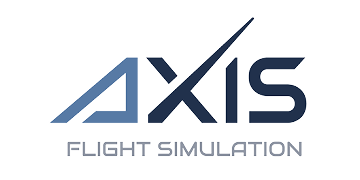
WHAT GETS MEASURED GETS MANAGED – WHY CARBON NEUTRALITY IS JUST THE START
31. October 2023
AXIS CERTIFIES ITS FIRST LEVEL-D ATR 72-600 FULL FLIGHT SIMULATOR IN USA
19. December 2023
WHAT GETS MEASURED GETS MANAGED – WHY CARBON NEUTRALITY IS JUST THE START
31. October 2023
AXIS CERTIFIES ITS FIRST LEVEL-D ATR 72-600 FULL FLIGHT SIMULATOR IN USA
19. December 202330. November 2023
TOP FIVE THINGS TO CONSIDER WHEN SELECTING A FLIGHT SIMULATOR
By Michaela Froelich, head of marketing and technical sales, AXIS Flight Simulation
Flight training businesses face a challenge. The current pilot shortage is limiting the number of flight instructors available to train new cadets. Combined with the industry’s environmental commitment to reaching net zero by 2050, this shortage is increasingly prompting the pilot training sector to turn to full flight simulators (FFS) as a key component of their offering.
FFS can efficiently guide aspiring pilots through each stage of their education, allowing instructors to teach multiple students at one time. In addition to trainees, FFS offer an unmatched level of flight practice for existing experts, without the need to take off from the ground.
There are a range of advanced systems available which offer different benefits depending on the desired outcome. Whether you plan to base your FFS at a flight school or training centre, investing in the correct system is paramount.
We’ve put together a guide to support you through the decision process, providing all the information required to select the right FFS for your operation. Here are the top five things to consider when selecting your flight simulator:
Aircraft-appropriate flight training
The ability to accurately recreate a specific type of aircraft is one of the most fundamental considerations for the pilot training sector.
From turboprops to jets, which might be light, midsize or long range, it’s important to match the simulator to the real-world experience.
This realistic recreation should also extend to operational training. The scenarios cadets will encounter during their real-world flying should be accurately recreated by the FFS – whether that’s military, search and rescue or commercial aviation.
Fidelity demand
Related to the authentic replication of the environment, it’s important to note that there are different levels of fidelity when it comes to FFS and how accurately they reflect flight on a given aircraft.
Pilot training businesses need to consider whether they need a Level D simulator – which relates to motion system latency and aerodynamic modelling – or whether a lower-level training device will be sufficient.
Location, location, location
Flight schools must also assess whether a given FFS supports training that aligns with the regulatory environment in which they are based. Cadets in the USA, for instance, will need to be trained in line with Federal Aviation Authority (FAA) regulations. In the EU, European Union Aviation Safety (EASA) regulations will apply.
Future upgrades
Pilot training centres should also be factored into future needs. If, for example, a new avionics system becomes available, will they want to upgrade their simulator? Will this be possible?
Achieving ROI
Any investment in a FFS needs to deliver sufficient ROI. That means considering which aircraft the simulator is appropriate for and whether there are enough cadets to train for this type.
It also means understanding the maintainability offered by the system and the extent of the support and service agreements in place, as well as whether a real person is available for a phone call if things do go wrong.
Researching reliability is also important here. A FFS that is less likely to need to be repaired in the first place will typically offer a greater ROI.
This might mean considering the operating system. Linux often proves more stable than the alternatives on the market.
At AXIS Flight Simulation, our commitment to quality and remaining ahead of the digital curve means our FFS use Linux. This ensures we provide the highest standards of stability and security.
Meanwhile, we deliver an increased ROI through our Technical Monitoring and Control System (TMCS), which drastically reduces maintenance time and effort.
Ultimately, for businesses choosing a flight simulator, there’s real value in collaborating with a technology innovator. This will ensure any investment is worthwhile, offering simulators that are more realistic, reliable and cost-effective.


